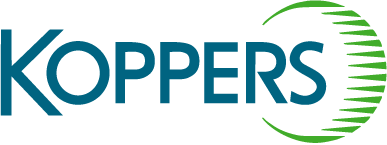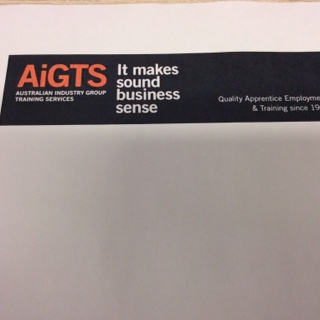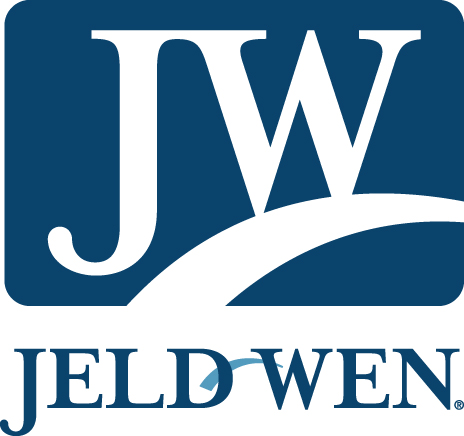Information
-
Audit Title
-
Document No.
-
Client / Site
-
Conducted on
-
Prepared by
-
Location
-
Personnel
Critical Control Protocol 01: SAFE WORK PERMIT
-
Was this element covered during this audit
COMPETENCY and TRAINING
1.1 Technical Information
-
Sample Operations Training & Competency records to confirm training in Safe Work Procedure, including:<br>Job Descriptions<br>Training Modules<br>Training Matrix<br>Training Records<br>
1.2 Competency and Training
-
Spot checks of personnel for compliance with training requirements<br>Spot checks of personnel to confirm<br>*Familiarity and compliance with operating procedures<br>* Awarness of hazards, causes and control measures associated with LPG<br>* Awareness of Safety Report and SMS
-
Spot checks of personnel for compliance with training requirements<br>Spot checks of personnel to confirm<br>*Familiarity and compliance with operating procedures<br>* Awarness of hazards, causes and control measures associated with LPG<br>* Awareness of Safety Report and SMS
SAFE WORK PROCEDURE
-
Review of Safe Work Permit and associated systems to confirm:<br>* Procedures are consistent with site activities<br>Correct revision is available to personnel
-
Review Work Pack to ensure supporting technical information such as drawings, are aligned to the activities
1.4 Change Management
-
Sample Safe Work procedure to confirm<br>* Procedures updates to reflect changes to design or operation<br>* Correct document revisions<br>*Document reviews conducted in accordance with company policy<br>
1.5 Competency and Training
-
Spot check for compliance with company requirements regarding PPE, working at heights, confined space etc.
Critical Control Protocol 02: EMERGENCY MANAGEMENT
2.1 Technical Information
-
Review ERP to ensure documents current & personnel contacts list are correct
-
Review ERP to ensure emergency plans align to Major Incident scenarios
-
Review of emergency scenarios to confirm safety and suitability of access routes and muster points
-
Communication systems, internal and external are documented
2.2 Incident and Test Records
-
Review communication systems, internal and external are documentedSample review of findings from muster and emergency drills to demonstrate compliance to the plan
-
Sample review of records to confirm site alarms (audibility and visual) are operational throughout the plant
2.3 Condition Inspections
-
Survey of the following to ensure adequacey:<br>escape routes<br>safety equipment condition and certification checks<br>access not compromised by temporary equipment or rubish
2.4 Inspections, Maintenance & Test Activities
-
Compliance to 3-Monthly drills
-
Compliance to 3-Yearly emergency exercises involving emergency services
-
Emergency drills with neighboring facilities (where necessary)
2.5 Change Management
-
Sample MOCs to ensure changes with impact on Emergency Management have been addressed
2.6 Competency & Training
-
Review training & competency status for all persons with key roles for Emergency Management
-
Sample survey of personnel for familiarity with Emergency Management Plan
Critical Control Protocol 03: CONTROL OF IGNITION SOURCES
Ex CERTIFIED ELECTRICAL EQUIPMENT
3.1 Technical Information
-
Electrical equipment dossier present
-
Ex equipment register upto date including:<br><br>Equipment uniquely identified and registered<br>Register current and correct with new tag capture
-
Hazardous area drawings availability and current
3.2 Test Records
-
Sample survey of Ex equipment inspection records to confirm appropriate information is captured such as:<br><br>Hazardous zone rating of equipment;<br>Ex certificate number<br>Compliance with Ex rating, T rating and IP rating, and<br>Equipment in good condition (external visual inspection)
3.3 Condition Inspections
-
2 Yearly sample visual inspections of EEHA
3.4 Inspection & Maintenance
-
Annual Terminal Inspection
3.5 Change Management
-
For new EEHA, sample review to confirm:<br><br>Ex equipment register to confirm uniquely identified and registered.<br>Vendor documentation and Hazardous Area drawings confirm suitable Ex rating.
-
Sample Review to ensure MoC procedure adequately followed and any actions closed out
3.6 Competency and Training
-
Sample review of Ex inspector and maintainer competences: confirm training is current and limits of competency clearly defined
EARTHING AND BONDING
3.7 Technical Information
-
Earthing specification
3.8 Test Records
-
Sample review of earthing inspections, maintenance and testing
3.9 Condition Inspections
-
Sample survey of electrical equipment at the facility to confirm that;<br><br>Earthing and bonding installed is appropriate and in good condition<br>connections installed correctly and identified
3.10 Inspection & Maintenance
-
Scheduled earthing inspections, maintenance and testing
3.11 Change Management
-
For new electrical equipment sample review to confirm:<br><br>Earthing straps, bar and connections correctly identified and recorded in earthing registered.<br>Vendor supplied earthing details
-
Sample Review to ensure MoC procedure adequately followed and any actions closed out
3.12 Competency and Training
-
Sample review of Ex inspector and maintainer competences: confirm training is current and limits of competency clearly defined
Critical Control Protocol 04: PRESSURE RELIEF DEVICES
4.1 Technical Information
-
PSV Testing protocol/process<br>PSVspecification, make, model , service etc is documented
4.2 Test Records
-
Sample review of PSV visual inspection records to ensure that:<br><br>PSVs installed as per PSV Register and facility P&IDs<br>PSVs in good condition<br>Test certificates and name plates indicate correct set pressure
4.3 Condition Inspection
-
Sample visual inspection to confirm (for example):<br><br>PSVs suitably sited above protected system/vessel<br>PSV discharge lines free draining, no liquid hold up, in good condition<br>PSV Unobstructed
4.4 Inspection, Maintenance and Witness Testing
-
10 Yearly PSV function test/replacement (as requid)<br>Terminal Site inspections (monthly & Annual) inspections of PSVs
4.5 Change Management
-
For new or altered PSVs;<br><br>Sample review of installation and commissioning to ensure correct installation, testing, piping to PSV stress free, approved locking system, blinds removed, valve piping class consistent with P&IDs<br><br>
4.6 Competency and Training
-
Sample review of records to ensure removal, refurbishment, and testing of PSVs preformed by competent persons in accordance with SOPs
Critical Control Protocol 05:PROCEDURES AND TRAINING OF BULK LPG TANKER DRIVERS
COMPETENCY & TRAINING
5.1 Technical Information
-
Sample Operations Training & Competency records to confirm training in Tanker Driver procedures<br><br>Job Descriptions<br>Training Modules (related to competences)<br>Training needs analysis/training requirements<br>Training records
5.2 Competency and Training
-
Spot checks of personnel for compliance with training requirements<br>Spot checks of personnel to establish:<br><br>Familiarity and competency with operating procedures<br>Knowledge & understanding of Major Accidents, hazards, causes and critical controls
PROCEDURES AND TRAINING OF BULK LPG TANKER DRIVERS
5.3 Technical Information
-
Sample review of Tanker Driver procedures to confirm:<br><br>Procedures are consistent with the operational activities<br>Correct revision procedures are readily available to appropriate personnel and in the correct format<br>Operating proceeds are identified and referenced<br>
5.4 Change Management
-
Sample review of operating procedures to confirm:<br><br>Procedures updated to reflect changes to design or operation<br>Corect document revisions<br>Document review completed in accordance with SOPs
5.5 Competency and Training
-
Spot checks for compliance with Site SOPs such as PPE
Critical Control Protocol 06
Critical Control Protocol 07: EMERGENCY SHUTDOWN
7.1 Technical Information
-
Instrument specification, make, model, service and functionality is full documented.<br>ESD functional specification<br>ESD Logic diagram/description<br>Instrument testing procedure is defined
7.2 Test Records
-
Review of ESD test records to confirm functionality.<br><br>Shutdown valve (SDV) operation as per ESD Philosophy<br>Satisfactory SDV closure time<br>
-
Review of SDV operation test records to demonstrate safe operation<br><br>Suitable fire protection (eg fire safe, PFP, materials of construction)<br>Fail safe operation
7.3 Condition Inspection
-
Instruments in good condition (external inspection)<br>instrument installed as per Facility P&IDs
7.4 Inspection, Maintenance and Test Activities
-
Terminal inspection (monthly & Annual) for ESD testing <br>Sample review of field device calibration records and verify correct settings have been used
7.5 Change Management
-
Review of ESD valve and system repair or replacement records to confirm no change to system performance or integrity <br>Sample review to ensure MoC procedure adequately followed and any actions closed out
7.6 Competency and Training
-
Sample review of records to ensure inspection and calibrations are performed by competent persons in accordance with SOPs
Critical Control Protocol 08: CYLINDER FILLING AND INSPECTION PROCEDURES & TRAINING
COMPETENCY & TRAINING
8.1 Technical Information
-
Spot checks of personnel for compliance with training requirements<br>Spot checks of personnel to establish:<br><br>Familiarity and competency with operating procedures<br>Knowledge & understanding of Major Accidents, hazards, causes and critical controls
8.2 Competency and Training
-
Spot checks of personnel for compliance with training requirements<br>Spot checks of personnel to establish:<br><br>Familiarity and competency with operating procedures<br>Knowledge & understanding of Major Accidents, hazards, causes and critical controls
CYLINDER FILLING AND INSPECTION PROCEDURES & TRAINING
8.3 Technical Information
-
Sample review of Tanker Driver procedures to confirm:<br><br>Procedures are consistent with the operational activities<br>Correct revision procedures are readily available to appropriate personnel and in the correct format<br>Operating proceeds are identified and referenced<br>
8 .4 Change Management
-
Sample review of operating procedures to confirm:<br><br>Procedures updated to reflect changes to design or operation<br>Corect document revisions<br>Document review completed in accordance with SOPs
8.2 Competency and Training
-
Spot checks for compliance with Site SOPs such as PPE
Critical Control Protocol 09: DESIGN OF EQUIPMENT
9.1 Technical Information
-
Equipment design specification (vessels, piping etc.)<br>
-
Sample review of Maintenance Management System database reports to confirm:<br><br>Status of scheduled tests/inspections is correctly recorded<br>Deferred maintenance suitably logged and authorized
9.2 Test Records
-
Sample review of internal inspection records (such as NDT and modification repair of vessels and associated pipe work)<br>
-
Sample review of storage tank/vessels inspection records<br><br>Visual observation to confirm good condition including coatings, welded joints, support and structures<br>Verify appropriate protection devices (relief valves, level measurements) installed as per P&ID<br>Confirm corrosion protection remains effective
9.3 Condition Inspection
-
Inspection of Vessels for signs of damage, wear or corrosion<br>Inspection of pipe work for signs of impact damage, corrosion or wear <br>Inspection of hoses for signs of damage or wear
9.4 Inspection, Maintenance and Test Activities
-
Terminal inspections (monthly and annual)<br>10 yearly internal inspections<br>2 Yearly external visual condition inspection to confirm good general condition of tanks, vessels, structures, coatings and corrosion protection equipment
9.5 Change Management
-
Sample review of engineering modification:<br><br>Tanks/vessels and associated equipment uniquely identified and registered<br>Design and operating conditions documented<br>Commissioned, inspected and tested in accordance with specification<br>Compliance with material specifications, design cos and standards
-
Sample review to ensure MoC procedure adequately followed and any actions closed out
9.6 Competency and Training
-
Sample review and verification of pressure vessel inspector training and qualifications
Critical Control Protocol 10: FIXED FIRE FIGHTING SYSTEMS
10.1 Technical Information
-
Fire system design basis is fully described together with design basis, flow rates etc.
10.2 Test Records
-
Sample review of firewater system inspection and test records to confirm (for example):<br><br>Sufficient coverage<br>sufficient delivery pressure and flow rates (no dry spots)<br>Sufficient spouse time
10.3 Condition Inspection
-
Inspection of hydrants for signs of damage, wear, or corrosion.<br>Inspection of Deluge for signs of impact, damage, corrosion or wear.<br>Inspection of hoses for signs of damage or wear<br>
10.4 Inspection, Maintenance and Test Activities
-
2-Yearly Firewater flow test.<br>3-Yearly LPG Facility emergency fire fighting drill.
10.5 Change Management
-
Sample review of engineering modifications to investigate impact on fixed fire fighting system capabilities.<br>Sample review to ensure MoC procedure adequately followed and any actions closed out
10.6 Competency and Training
-
Sample review of fire fighting training and competences, and provision of trained personnel on site.<br>Spot check of LPG Facility personnel awareness of fire risks and if fighting controls.
Critical Control Protocol 11: TRAFFIC MANAGEMENT
COMPETENCY AND TRAINING
11.1 Technical Information
-
Sample Operations Training & Competency records to confirm training in Safe Work Procedure, including:<br>Job Descriptions<br>Training Modules<br>Training Matrix<br>Training Records<br>
11.2 Competency and Training
-
Spot checks of personnel for compliance with training requirements<br>Spot checks of personnel to confirm<br>*Familiarity and compliance with operating procedures<br>* Awarness of hazards, causes and control measures associated with LPG<br>* Awareness of Safety Report and SMS
TRAFFIC MANAGEMENT PLAN
11.3 Technical Information
-
Review the Traffic Management Plan to confirm:<br>Document is consistent with operational activities.<br>Correct revision procedures are readily available to appropriate personnel and in the correct format.<br>Operating procedures are identified and referenced.
11.4 Change Management
-
Sample changes to Traffic Management Plan to ensure:<br>Procedus updated to reflect changes to design or operation.<br>Correct document revisions.<br>Document reviews completed in accordance with SOPs.
11.5 Competency and Training
-
Spot checks for compliance with SOPs eg PPE
Critical Control Protocol 12: INSPECTION AND MONITORING
COMPETENCY AND TRAINING
12.1 Technical Information
-
Sample Operations Training & Competency records to confirm training in Safe Work Procedure, including:<br>Job Descriptions<br>Training Modules<br>Training Matrix<br>Training Records<br>
12.2 Competency and Training
-
Spot checks of personnel for compliance with training requirements<br>Spot checks of personnel to confirm<br>*Familiarity and compliance with operating procedures<br>* Awarness of hazards, causes and control measures associated with LPG<br>* Awareness of Safety Report and SMS
INSPECTION AND MONITORING
12.3 Technical Information
-
Sample review of Inspection & Monitoring program to confirm:<br>Checklists are consistent with operational activities.<br>Correct revision Procedures are readily available to appropriate personnel and in the correct format.<br>Checklists are identified and referenced.<br>Inspection & Monitoring program has been developed and implemented<br>
12.4 Change Management
-
Sample review of operating procedures to confirm:<br>Procedures updated to reflect changes to design or operation.<br>Correct document revisions.<br>Document reviews completed in accordance with SOPs.
12.5 Competency and Training
-
Spot checks for compliance with SOPs eg PPE
Critical Control Protocol 13: TRAINING MAINTENANCE PERSONEL
COMPETENCY AND TRAINING
13.1 Technical Information
-
Sample Maintenance Personnel Training & Competency records to confirm training in Safe Work Procedure, including:<br>Job Descriptions<br>Training Modules<br>Training Matrix<br>Training Records<br>
13.2 Competency and Training
-
Spot checks of personnel for compliance with training requirements<br>Spot checks of personnel to confirm<br>*Familiarity and compliance with operating procedures<br>* Awarness of hazards, causes and control measures associated with LPG<br>* Awareness of Safety Report and SMS
OPERATING AND MAINTENANCE PROCEDURES
13.3 Technical Information
-
Sample review of Maintenance Operating procedures to confirm:<br>Procedures are consistent with operation activities<br>Correct revision Procedures are readily available to appropriate personnel and in the correct format.<br>Checklists are identified and referenced.<br>
13.4 Change Management
-
Sample review of operating procedures to confirm:<br>Procedures updated to reflect changes to design or operation.<br>Correct document revisions.<br>Document reviews completed in accordance with SOPs.
13.5 Competency and Training
-
Spot checks for compliance with SOPs eg PPE
Critical Control Protocol 14: PROCEDURES AND TRAINING OF BULK LNG TANKER DRIVERS
COMPETENCY & TRAINING
14.1 Technical Information
-
Sample Operations Training & Competency records to confirm training in Tanker Driver procedures<br><br>Job Descriptions<br>Training Modules (related to competences)<br>Training needs analysis/training requirements<br>Training records
14.2 Competency and Training
-
Spot checks of personnel for compliance with training requirements<br>Spot checks of personnel to establish:<br><br>Familiarity and competency with operating procedures<br>Knowledge & understanding of Major Accidents, hazards, causes and critical controls
PROCEDURES AND TRAINING OF BULK LNG TANKER DRIVERS
14.3 Technical Information
-
Sample review of Tanker Driver procedures to confirm:<br><br>Procedures are consistent with the operational activities<br>Correct revision procedures are readily available to appropriate personnel and in the correct format<br>Operating proceeds are identified and referenced<br>
14.4 Change Management
-
Sample review of operating procedures to confirm:<br><br>Procedures updated to reflect changes to design or operation<br>Corect document revisions<br>Document review completed in accordance with SOPs
14.5 Competency and Training
-
Spot checks for compliance with Site SOPs such as PPE
Critical Control Protocol 15: PROCESS SHUTDOWN SYSTEM
15.1 Technical Information
-
Instrument specification, make, model, service and functionality is fully described.<br>Instrument testing procedure is defined.
15.2 Test Records
-
Sample review of instruments to ensure(:<br><br>Instruments installed as per P&ID.<br>Instruments in good condition (external inspection).
15.3 Condition Inspections
-
Process Shutdown Systems are regularly tested.
15.4 Inspection and Maintenance
-
Sample review of field devices calibration records and verify correct settings have been used.
15.5 Change Management
-
Sample review to ensure MoC procedure adequately followed and any actions closed out
15.6 Competency and Training
-
Sample review of records to ensure inspection and calibrations are preformed by competent person in accordance to SOPs
Critical Control Protocol 16: DOCUMENTATION SYSTEMS
COMPETENCY & TRAINING
16.1 Technical Information
-
Sample applicable personnel Training & Competency records to confirm training in Tanker Driver procedures<br><br>Job Descriptions<br>Training Modules (related to competences)<br>Training needs analysis/training requirements<br>Training records
16.2 Competency and Training
-
Spot checks of personnel for compliance with training requirements<br>Spot checks of personnel to establish:<br><br>Familiarity and competency with Documentation Systems<br>Knowledge & understanding of Major Accidents, hazards, causes and critical controls.<br>Awareness of the Safety Report and the Safety Management System
DOCUMENTATION SYSTEMS
16.3 Technical Information
-
Sample review of Documentation System to confirm:<br><br>Documentation Systems are consistent with the operational activities<br>Correct revision procedures are readily available to appropriate personnel and in the correct format<br>Operating proceeds are identified and referenced<br>
16.4 Change Management
-
Sample review of Documentation System to confirm:<br><br>Documentation Systems have been updated to reflect changes to design or operation<br>Corect document revisions<br>Document review completed in accordance with SOPs
16.5 Competency and Training
-
Spot checks for compliance with Site SOPs such as PPE











